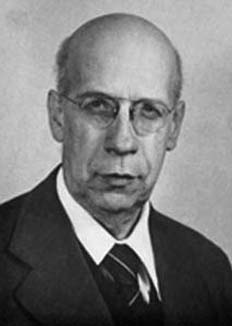

تاريخ الرياضيات

الاعداد و نظريتها

تاريخ التحليل

تار يخ الجبر

الهندسة و التبلوجي


الرياضيات في الحضارات المختلفة

العربية

اليونانية

البابلية

الصينية

المايا

المصرية

الهندية


الرياضيات المتقطعة

المنطق

اسس الرياضيات

فلسفة الرياضيات

مواضيع عامة في المنطق


الجبر

الجبر الخطي

الجبر المجرد

الجبر البولياني

مواضيع عامة في الجبر

الضبابية

نظرية المجموعات

نظرية الزمر

نظرية الحلقات والحقول

نظرية الاعداد

نظرية الفئات

حساب المتجهات

المتتاليات-المتسلسلات

المصفوفات و نظريتها

المثلثات


الهندسة

الهندسة المستوية

الهندسة غير المستوية

مواضيع عامة في الهندسة

التفاضل و التكامل


المعادلات التفاضلية و التكاملية

معادلات تفاضلية

معادلات تكاملية

مواضيع عامة في المعادلات


التحليل

التحليل العددي

التحليل العقدي

التحليل الدالي

مواضيع عامة في التحليل

التحليل الحقيقي

التبلوجيا

نظرية الالعاب

الاحتمالات و الاحصاء

نظرية التحكم

بحوث العمليات

نظرية الكم

الشفرات

الرياضيات التطبيقية

نظريات ومبرهنات


علماء الرياضيات

500AD

500-1499

1000to1499

1500to1599

1600to1649

1650to1699

1700to1749

1750to1779

1780to1799

1800to1819

1820to1829

1830to1839

1840to1849

1850to1859

1860to1864

1865to1869

1870to1874

1875to1879

1880to1884

1885to1889

1890to1894

1895to1899

1900to1904

1905to1909

1910to1914

1915to1919

1920to1924

1925to1929

1930to1939

1940to the present

علماء الرياضيات

الرياضيات في العلوم الاخرى

بحوث و اطاريح جامعية

هل تعلم

طرائق التدريس

الرياضيات العامة

نظرية البيان
Philipp Frank
المؤلف:
R S Cohen,G Holton
المصدر:
Biography in Dictionary of Scientific Biography
الجزء والصفحة:
...
31-5-2017
881
Died: 21 July 1966 in Cambridge, Massachusetts, USA

Philipp Frank's father was Ignaz Frank and his mother was Jenny Feilendorf. Philipp studied physics at the University of Vienna obtaining a doctorate in theoretical physics in 1907 after working under Boltzmann. He described his student days as follows (see for example [1]):-
... the domain of my most intensive interest was the philosophy of science. I used to associate with a group of students who assembled every Thursday night in one of the old Viennese coffee houses ... We returned again and again to the central problem: How can we avoid the traditional ambiguity and obscurity of philosophy? How can we bring about the closest possible rapprochement between philosophy and science?
The group of students that Frank is describing in this quotation is the group who would eventually become known as the Vienna Circle. Other members of the group at this time were Hahn, von Mises, and an economist and sociologist, Otto Neurath. The group developed the philosophy of logical positivism, investigating scientific language and scientific methodology. During this time Frank became a friend of von Mises, who obtained his doctorate from Vienna in the 1907, the same year as Frank. It was a friendship which would last throughout their lives and involve joint work.
In 1907 Frank wrote an important paper on causality. Einstein was impressed by Frank's ideas which he put forward in this paper and the resulting discussions led to another life long friendship, this time between Frank and Einstein. Both loved the philosophy of science and the ideas of each would influence the other. Frank received his habilitation and was appointed a lecturer in the University of Vienna in 1910. On Einstein's recommendation Frank succeeded him to the chair of theoretical physics in the German University of Prague in 1912.
Frank, Hahn and von Mises became part of the somewhat larger group active during the 1920s in the Vienna Circle of Logical Positivists. Important influences on their thinking came from several other mathematicians and scientists interested in philosophy: Riemann, Helmholtz, Hertz, Boltzmann, Poincaré, Hilbert, and Einstein. More on the philosophy side, influences came from Frege, Russell and Whitehead. Frank, describing how he felt that science, mathematics and philosophy were linked, explained that [1]:-
... he sought always to achieve a balanced outlook on man and nature; and for him physics not only provided reliable answers to particular technical problems but also raised and illuminated important questions concerning the nature, scope, and validity of human knowledge. ... [he] believed that a stable perspective on life can best be achieved through the critical, intellectual method of modern natural science.
The friendship between Frank and von Mises developed into a collaboration in the mid 1920s. They were joint authors of the lengthy two volume book Differentiagleichungen und Integralgleichungen der Mechanik und Physik which was published in 1925. Frank had married on 16 November 1920, his wife being Hania Gerson.
Frank remained at the German University in Prague until 1938. The Munich Agreement in that year saw large parts of the Czechoslovak republic surrendered to Germany. German troops along with Hitler himself had entered Austria on 12 March 1938, and a Nazi government had been set up there. Political pressure was put on Frank and other members of the Vienna Circle, and the group disbanded with many of its members including Frank fleeing to the United States.
In the United States Frank was first appointed as a visiting lecturer, then made a lecturer in physics and mathematics at Harvard. He was joined at Harvard by his friend von Mises. In 1947 Frank wrote an excellent biography Einstein: His Life and Times.
Frank worked on a wide range of topics in mathematics, and when one takes into account his publications on physics and philosophy it was a truly remarkable breadth. In mathematics he worked on the calculus of variations, Fourier series, function spaces, Hamiltonian geometrical optics, Schrödinger wave mechanics, and relativity.
- G Holton, R S Cohen, Biography in Dictionary of Scientific Biography (New York 1970-1990).
http://www.encyclopedia.com/doc/1G2-2830901504.html
Books:
- R S Cohen and M W Wartofsky (eds.), Boston studies in the Philosophy of Science II (New York, 1965).
Articles:
- In memory of Philipp Frank, Philosophy of Science 35 (1968), 1-5.
 الاكثر قراءة في 1880to1884
الاكثر قراءة في 1880to1884
 اخر الاخبار
اخر الاخبار
اخبار العتبة العباسية المقدسة

الآخبار الصحية















 "المهمة".. إصدار قصصي يوثّق القصص الفائزة في مسابقة فتوى الدفاع المقدسة للقصة القصيرة
"المهمة".. إصدار قصصي يوثّق القصص الفائزة في مسابقة فتوى الدفاع المقدسة للقصة القصيرة (نوافذ).. إصدار أدبي يوثق القصص الفائزة في مسابقة الإمام العسكري (عليه السلام)
(نوافذ).. إصدار أدبي يوثق القصص الفائزة في مسابقة الإمام العسكري (عليه السلام) قسم الشؤون الفكرية يصدر مجموعة قصصية بعنوان (قلوب بلا مأوى)
قسم الشؤون الفكرية يصدر مجموعة قصصية بعنوان (قلوب بلا مأوى)


















